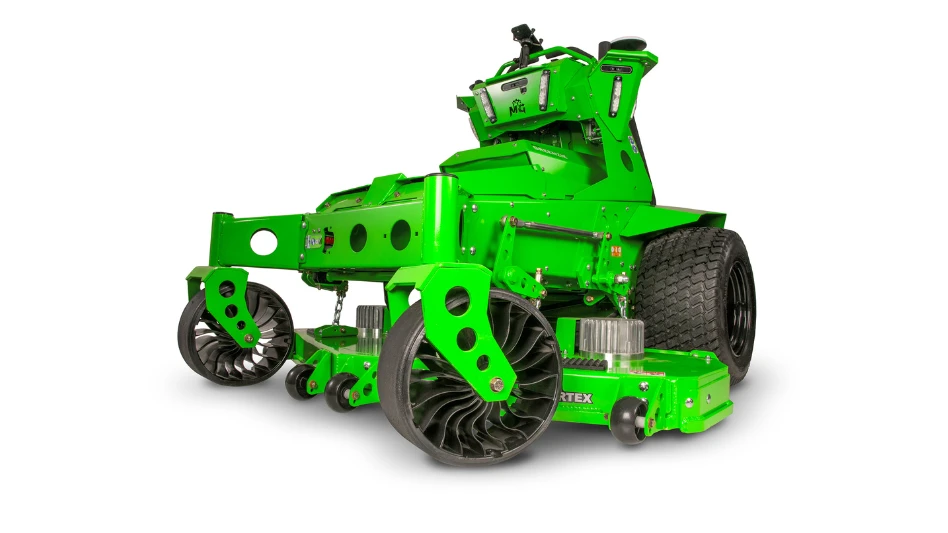During Lawn & Landscape’s inaugural Top 100 event, Editor Chuck Bowen sat down with a few industry leaders to discuss best practices in their companies. Whether your yearly revenue is $50 million or $50,000, these are takeaways everyone can use.
When it comes to focus, Jason Craven, president and CEO of Southern Botanical, said at his company, quality comes first. “It’s always been a big part of our culture,” he said. When it comes to deciding what’s right for the client, he gives his team leeway to make those decisions in the field.
Brian DuMont, president and CEO of Yard-Nique, said at his company, he focuses on quality, but said it can’t be No. 1. “For me, it’s focusing on people and letting them handle the rest,” he said.
To do this, DuMont makes sure to put in his schedule to reach out to a different employee each day. He asks them about their family, themselves and anything else to show he cares as more than a boss. When an employee’s daughter had an upcoming surgery, DuMont made sure to schedule it in his phone so he knew to ask how the surgery had gone.
“I make a big effort to empower people and focus on people,” he said.
“The key is that the core values are not separable,” said Joe Ciffolillo, president and CEO of Greenscape. Driving efficiency, increasing customer loyalty and increasing quality go hand-in-hand, and none can take more focus than the others.
Ciffolillo’s company has also implemented a point system to recognize employees who step up on the job.
“Water the flowers, not the weeds,” is how Bowen phrased it. Ciffolillo’s managers can award points to employees who are doing something well. The employees can then use those points to go online and buy new TVs, vacations, etc.
“It spreads like wild fire when somebody starts getting the points,” Ciffolillo said.
Jeff Sebert, CEO of Sebert Landscape, said it’s all about creating an environment your employees are going to appreciate. For his crews, that involved putting solar film on an enclosed trailer and making it a charging system for all of their battery-operated equipment. His company uses the trailer as a marketing tool, and as a result, they get requests to use the trailer on specific jobs.
“The value is multi, and I think, as an industry, I hope we continue to push this idea and continue to grow the idea,” he said.
On the same line, technology-wise, both Craven and Ciffolillo have started adding modern updates to the company. Craven is testing an app for internal employee news.
“As we stay open and communicate with the team, it’s hard for me to get in front of everyone as often as I should,” he said. He added that it’s not a replacement for those personal touches, just a way to expand on them.
Ciffolillo has switched his company to a tablet system to collect payroll data in real time. He’s also rolled out an RFID system that allows managers to aim a gun at the trailer and take inventory without taking the time to look for everything.
“Sometimes, I think technology is giving us a false sense of security,” DuMont said. He still handwrites notes, although his crews use tablets. He supports his team on whatever they think they’ll need to get the job done efficiently.
No matter your culture, it’s important to include safety in the mix.
“We really press to our team that the most important thing beyond the customer is everyone to get home to their families safe, and in one piece,” Ciffolillo said.
Sebert said safety needs to begin at the hiring process. It’s important to hire people who have previous knowledge. He said you really need to make sure you’re hiring the right person for the right job, and to make sure they’re trained correctly. His company has a third-party safety committee come in and do safety checks at job sites.
Latest from Lawn & Landscape
- Connect, Control & Conserve with Horizon Technical Services
- Use Horizon's Parts Hotline
- How I built a Top 100 company
- Horizon’s Exclusive TurfGro Fertilizer
- Grow your business with mosquito control
- LandCare adds 2 branches in SoCal, promotes Aleman to branch manager
- Spray them away
- PERC helps debut propane direct-injection fuel system at ACT Expo 2025





